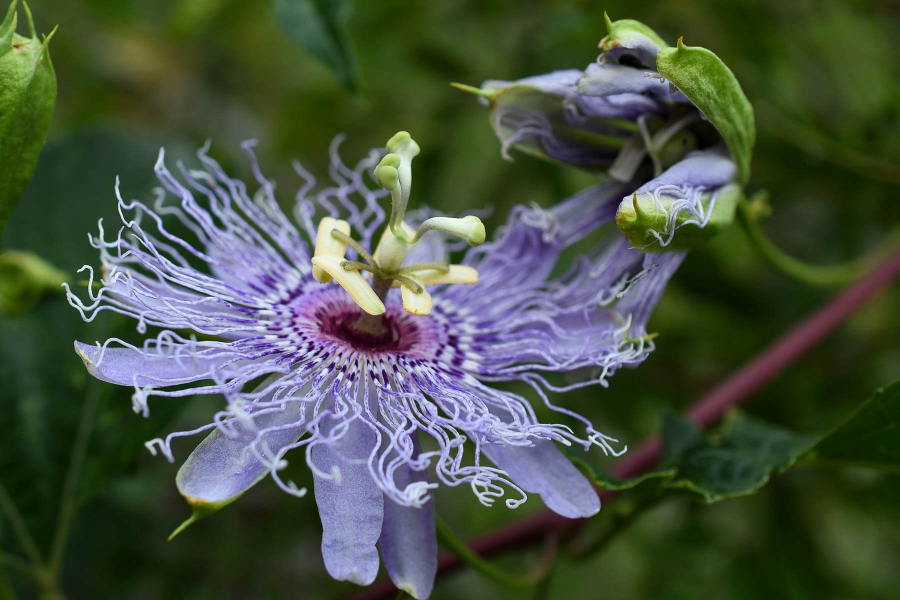Growing a passion for an unusual native species

Passiflora incarnata is native to the southern United States and can be found as far north as Pennsylvania. The fruit might not be as sweet as its tropical cousin but it is just as beautiful.
The story behind the names
Passiflora incarnata has several common names, but most popular are the maypop and passionflower.
The origin of the name maypop is unclear. Some people believe the name is a nickname because the fruits pop when stepped on and flowers begin to form in May in Southern regions. Others believe the name evolved from the Algonquin word “mahcawq” or “maracock.”
The name passionflower was given to the plant by European missionaries that came to the Americas in the 1500's. They used the different parts of the flower as symbols of the crucifixion of Jesus Christ: the wavy corona filaments that attract pollinators to the flower represent the crown of thorns worn by Jesus, the three yellow stigma that receive pollen in the center of the flower represent the nails of the cross, the five anthers represent the five holy wounds, and the sepals and petals represent the 10 apostles.
Importance for people and animals
This plant is valued for more than just its jaw-dropping looks. Passiflora incarnata is the host plant of the variegated fritillary butterfly, gulf fritillary butterfly and the zebra longwing butterfly, which means these insects use it to lay their eggs and it is the main food source for the larval form of that insect. Of those three, the variegated fritillary butterfly is the most commonly found in the Bay watershed, though others may visit the plant depending on where you live.
As a plant rich in pollen and nectar, the flowers attract a wide variety of pollinators. Ants feed on the plant’s nectar and are known to violently defend individual plants by knocking off butterfly eggs and caterpillars. Wild turkeys are known to eat the young shoots of the plant (underground, stem-like features) and many animals enjoy the semi-sweet fruit that eventually blooms.
American Indians have a long history of using the plant for food and medicinal purposes. The roots, vines, leaves and fruit have been used to treat ailments such as inflammation, earaches, insomnia and anxiety. Today, many continue to research the many potential uses of this plant.
How to grow your own
Passionflower is a vigorous perennial plant that is best grown in large spaces. It prefers full sun to light shade and well-draining soil. The plant can grow up to 15 feet per season and is known to spread through underground shoots. Gardeners will often find new plants sprouting several feet away from the original plant. The flower’s fruits start to develop in mid-summer and will appear as bright green circles; they are ripe when they turn yellow and have softened. Try some recipes with the maypops you grow.
Visit our field guide to learn more about native plants of the Chesapeake Bay watershed!

Comments
Hi, Janette! You might have to call nurseries to find out. Here is a list of native plant nurseries and vendors in Maryland: https://mdflora.org/nurseries.html
Wow! Gorgeous! I have the perfect spot for this plant. Is it available at nurseries in calvert county?
Thank you!
Your comment has been received. Before it can be published, the comment will be reviewed by our team to ensure it adheres with our rules of engagement.
Back to recent stories